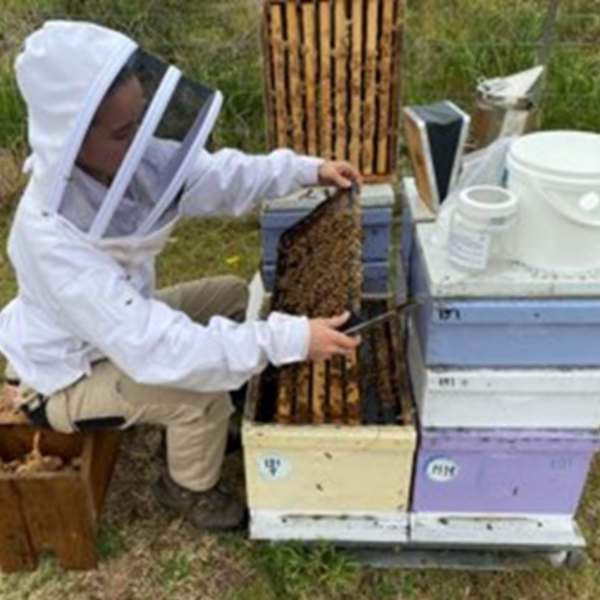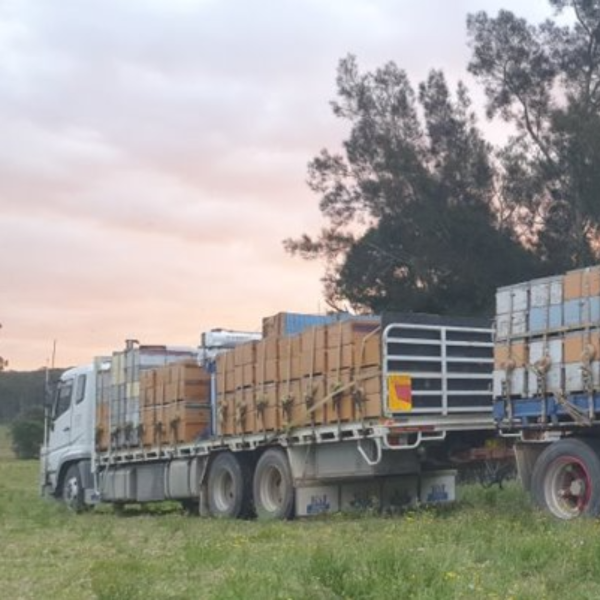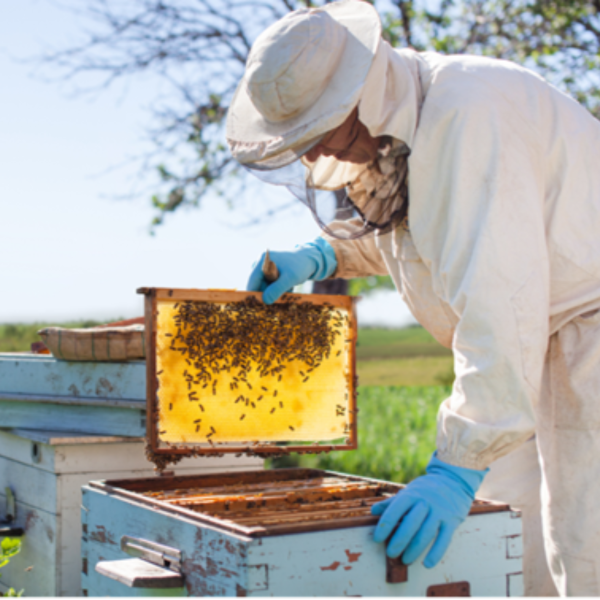
Varroa mite transition to management
The Varroa destructor mite is now considered established in New South Wales. Varroa is a notifiable pest under the Biosecurity Act 2015 and Biosecurity Regulation 2017, so beekeepers are required to monitor and report its presence.

Varroa incursion history
Varroa mite (Varroa destructor) was first detected in DPIRD surveillance hives at the Port of Newcastle in June 2022. The Varroa mite Response was established immediately and became a national response funded and supported by Commonwealth, state and territory governments as well as contributing industries.
The response quickly became the largest multi-agency plant biosecurity response in Australia's history, and sought to carefully manage biosecurity risk, protect agricultural industry and maintain business continuity.
The Varroa mite Response is overseen by the Consultative Committee on Emergency Plant Pests (CCEPP) and the National Management Group (NMG). The NMG is made up of representatives from the Federal Government, every state and territory department and executives from relevant peak industry bodies and Plant Health Australia.
On 13 February 2024 the NMG approved the next phase of the national Transition to Management (T2M) plan for Varroa mite. The T2M plan aims to increase resilience and minimise ongoing impacts of varroa mite naturalisation across Australia's bee and pollination-dependent industries.
This phase of the plan focuses on increased training to help beekeepers prepare and manage the pest.

What happens now?
A national Varroa education program is being rolled out to train beekeepers and pollination-dependent industries prepare and manage the pest.
Beekeepers are required to inspect their own hives for pests and diseases, as per their General Biosecurity Duty and the Code of Practice. All detections of Varroa must be reported. Report detections here.
Information on management best practice are provided in our Primefact

What does transition to management of Varroa mite mean?
The transition to management program aims to increase resilience and capacity to manage Varroa mite within the Australian honey bee industry, thereby minimising the impact of Varroa mite naturalisation on bee and pollination reliant industries. This will occur through slowing the spread, building industry resilience, providing management options and supporting pollination security.

What must all beekeepers do?
Beekeepers must regularly inspect their hives for pests and diseases. Beekeepers must report all detections of varroa mite.

Varroa mite Primefact
To learn more about Varroa biology and monitoring, read the Varroa mite Primefact

Varroa mite legislation
Links to the The Biosecurity Act 2015 and all subordinate legislation including Biosecurity Regulation 2017 are available here.

Varroa Management Training

National Varroa Mite Response Plan
To find our more about the current National Varroa Mite Response Plan you can read the following response plan summaries.
The Varroa Emergency Response Hotline, accessed via the Exotic Plant Pest Hotline 1800 084 881, is operational Monday to Friday 9am - 5pm.
Varroa mite heat map
The NSW Varroa mite heat map has been discontinued as of Tuesday 23rd September 2025. The map was no longer considered representative of the extent of Varroa across NSW.

Why is the NSW heat map closing?
The NSW/ACT Heat Map was launched in the months after the first detection of Varroa mite to help beekeepers prepare as the pest approached their areas. Its use has been declining in recent months anecdotally relating to a broad acceptance that Varroa mite is now widespread across NSW. Additionally, Varroa reports used to populate the map are also declining, meaning the level of confidence in the information displayed is low.

Do I still have to report detections of Varroa mite in my hive?
Yes. Varroa mite remains a notifiable pest in across Australia.
All positive cases of Varroa mite MUST still be reported at varroa.org.au/reporting

Do I still have to submit all monitoring action results?
Negative monitoring actions are not required to be reported.

Why do other state authorities still have active Varroa mite heat maps?
As of September 2025, the mite has also been identified in the ACT, VIC, QLD and SA, although not in the same numbers as across NSW.
Similar to NSW in the early stages of the establishment of the mite, the Heat Maps in Victoria, QLD and SA remain a valuable tool as they identify the reported spread of the mite and provide beekeepers and pollination dependent industries in these jurisdictions more information on how close the pest is to their apiaries enabling better preparation. You can find information about Varroa mite reporting for all states and territories at varroa.org.au/reporting

Why do I still have to report positive Varroa mite cases in NSW if the NSW / ACT heat map is no longer active?
Under the NSW Biosecurity Act 2015, Varroa mite remains prohibited matter and as such is a notifiable pest regardless of the discontinuation of the NSW Heat Map.

Is the National Varroa Mite Management Program (NVMMP) shutting down all NSW information?
No. Only the NSW online Heat Map is being discontinued at this point.
Visit varroa.org.au to see the full suite of online resources including training videos, treatment plans and much more provided by the NVMMP as well as other resources and information available across dpi.nsw.gov.au

Is there another way I can physically see where Varroa mite is present in NSW?
No. Given the continued spread of Varroa mite across NSW, beekeepers should assume that the mite is either present in, or nearby, all regions.

Where can I get additional information?
To learn more about Varroa mite including how to monitor and manage the pest, visit varroa.org.au
Your wellbeing
Read our Assistance Guide for Beekeepers (PDF, 231.53 KB) for various assistance services available to impacted beekeepers.
There are free and confidential support services available to all beekeepers during this difficult time and we encourage beekeepers to access small business and mental health and wellbeing support early.
Small business support is available to beekeepers through:
- Rural Financial Counselling Service on 1800 344 090
- Small Biz Connect on 1300 134 359
The Varroa mite emergency response has impacted people’s mental and emotional wellbeing.
Stressful events can cause feelings of worry and unease, especially where there are levels of uncertainty involved, but there are things you can do to take care of yourself.
In tough times we need to remember to look after ourselves. As much as possible, maintaining routines with good diet, exercise, and sleep will increase your capacity to deal with stress.
This is the time to stay connected with family and friends and seek for support when you need it.
Mental health support is available from:
- NSW Mental Health Line, 1800 011 511 (24/7)
- Beyond Blue, 1300 22 46 36
- Lifeline, 13 11 14
- Rural Adversity Mental Health Program
- Rural Aid Mental Health & Wellbeing Line (Mon to Fri 9am – 5pm), 1300 175 594





